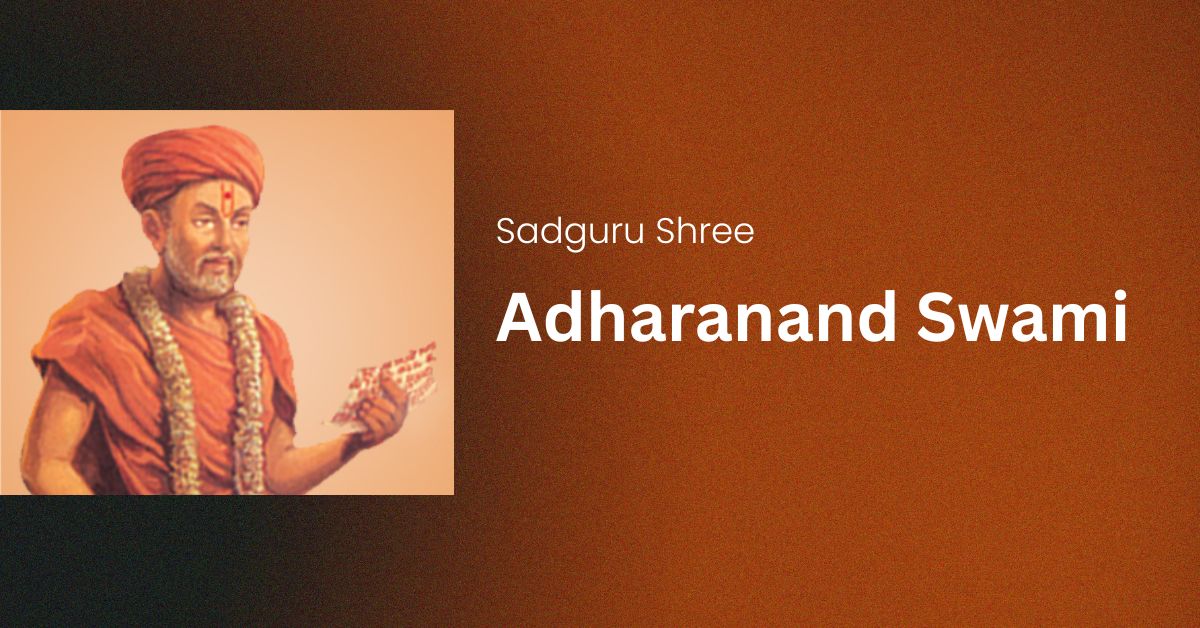Sadguru Shree Adharanand Swami, one of the 500 paramahansas of Bhagwan Shree Swaminarayan, was unique for his artistic prowess, particularly in painting. He was also the author of the monumental scripture “Shree Haricharitramrut Sagar”, a text comparable in scale to the Mahabharata, and held a prominent position among the Ashta Kavis (eight poets). He was a principal disciple and scribe of Sadguru Shree Muktanand Swami.
Swamishree was born into the Gurjar Sutar community in the village of Kholadiyad, to Hansrajbhai. His childhood name was Virji. The influence of Satsang permeated every aspect of his family’s life. The devotional upbringing in his pure household, resembling the ashram of a sage, profoundly impacted Virji’s life. As he reached adulthood, Virji asked his mother not for a bride, but for permission to embark on the path of spirituality by dedicating himself to Shree Hari. His mother encouraged him to pursue the divine path. However, his father, Hansraj, who himself was contemplating renouncing worldly life, tried to dissuade his son.
Even Gurudev Shree Muktanand Swami tried to dissuade Virji. Ultimately, impressed by Virji’s intense detachment, Swami ordered Hansraj to remain in his household duties and granted Virji permission to become a sadhu. Both father and son were taken to Shreeji Maharaj, and when all the details were narrated, Shreeji Maharaj was extremely pleased with both of them and embraced them. After consulting with Muktanand Swami, Shree Hari initiated Virji and named him “Adharanand Swami”. As Swami was also a poet, and his name didn’t fit always flow well into his kirtans, he was also known by another name, “Siddhanand Swami”.
Since Sadguru Shree Adharanand Swami belonged to the Gurjar Sutar community, he inherited his artistic skills. Swami was the only painter sadhu in the Swaminarayan Sampraday. He created small and large, simple or golden, colorful idols of Shreeji Maharaj, which are still preserved by many Santo through their respective guru-parampara (lineage of gurus). Besides being a painter, Swami was also an unparalleled scribe. Swami earned the title of Muktanand Swami’s right-hand man and wrote tirelessly.
Along with painting and writing, Swami was also well-versed in architecture. The construction of Shikharbandh temples and Hari Mandirs throughout the Sampraday took place under Swamishree’s supervision. The greatest work of Swami’s life is the creation of the monumental granth “Shree Haricharitamrut Sagar,” a text as vast as the Mahabharat. Swami began composing this scripture at the age of 58. Within three years and three months, he composed 97,389 dohas (couplets), chopais (quatrains), 2309 tarangs (waves), and 28 purs (sections), yet the work remained incomplete. This scripture is revered in both desh as a full-life diary of Shree Hari.
Thus, Adharanand Swami’s life was spent as an unparalleled devotee of Shree Hari, a servant and scribe of Muktanand Swami, a painter sadhu of the Sampraday, and the author of one the largest scriptures in the literary world.
Swamishree’s presence was also noted at the assembly in Vikram Samvat 1919 (around 1863 CE) when Acharya Shree Raghuvirji Maharaj enthroned Shree Bhagwatprasadji Maharaj. There is no mention of when Swamishree left his mortal body. Some historical accounts of Swamishree’s life indicate his existence until V.S.1928 (around 1872 CE).

